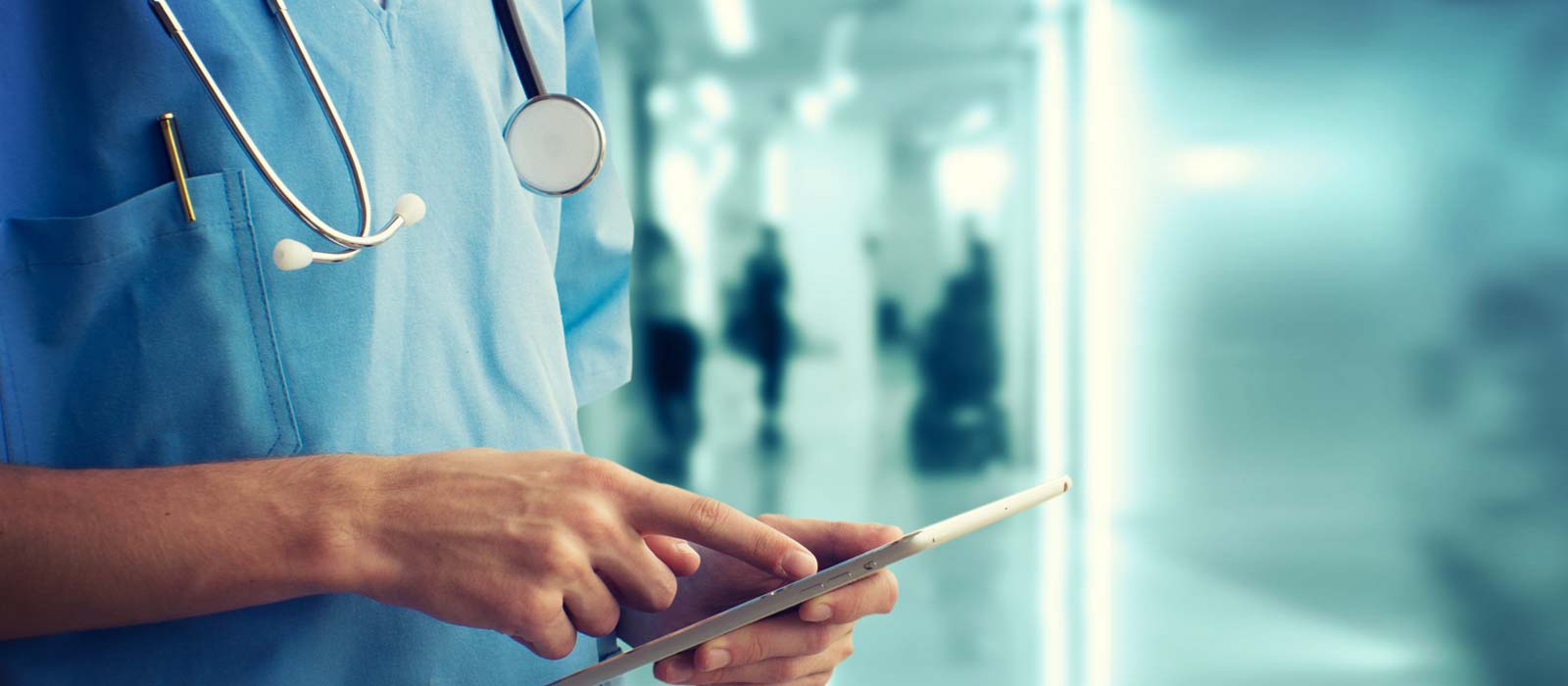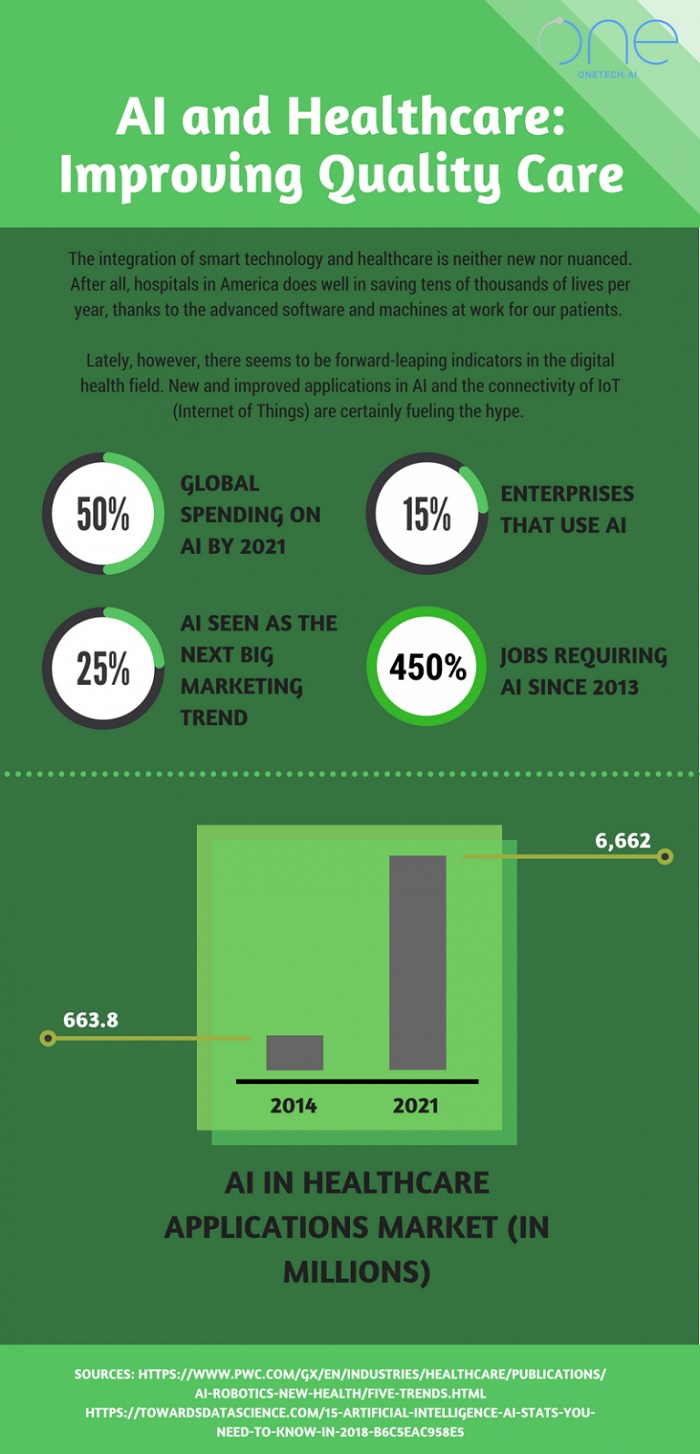
15 May Top 6 AI applications in Healthcare
The integration of smart technology and healthcare is neither new nor nuanced. After all, hospitals in America does well in saving tens of thousands of lives per year, thanks to the advanced software and machines at work for our patients.
Lately, however, there seems to be forward-leaping indicators in the digital health field. New and improved applications in AI and the connectivity of IoT (Internet of Things) are certainly fueling the hype. From “machine learning”, which combines a “self-learning” process and data aggregation, to the pattern-recognizing capability of “deep learning”, artificial intelligence is making strides to further automation in the medical field.
Here is MicroAI’s list for the top 6 AI applications in healthcare:
1. Solution-Based Algorithms
The amount of data generated by U.S. hospitals is reaching a near incalculable number. According to the Institute for Health Technology Transformation, big data for U.S. healthcare will reach the zettabyte (a unit equating to one sextillion, or 1021 ) and not long after, the yottabyte (a unit equating to one septillion, or 1024 ).
To ensure maximum utilization of data, medical staff could embed data into complex algorithms, allowing computers to process and design solutions. For example, a computer that is document-fed all historical reports on patient prognosis and treatments could then predict a personalized treatment. This suggested treatment would, on average, be more accurate and effective than a human-suggested treatment.
2. Best-Practices Adoption
In addition to data-fed algorithms, AI allows the best practices of top-rated physicians to be recorded and adopted by other physicians from across the world. By using AI to help raise physician performance, there would be reduction in human errors, inefficient diagnosis, and fatalities. Imagine a world where all physician performance matched that of the top 10%. This is exactly the vision that bold developers are looking to optimize in health care.
3. NLP (Natural-Language Processing)
What is NLP, or natural-language processing? In short, NLP deals with speech recognition and the understanding and generation of natural language. In other words, NLP is the means to which hospitals can efficiently review and evaluate medical records. This allows for faster and more secure management of thousands of daily patients. By perfecting AI syntax, semantics, and speech, NLP can be used to provide better patient interaction and workflow fluidity.
4. Visual Pattern Recognition Software
Eyewitness testimony is often and arguably deemed unreliable in the field of science. As astrophysicist and science influencer Neil deGrasse Tyson would put it, “No matter what eyewitness testimony is in the court of law, it is the lowest form of evidence in the court of science.” Much of radiology, pathology, ophthalmology, and dermatology, requires human visual assessment. AI integration in these fields can potentially reduce judgement errors and increase diagnosis accuracy.
A study from the Journal of Patient Safety found that more than 210,000 deaths a year are related to medical errors. It can’t be discerned for certain how many of these deaths are related to visually-assessed treatments, but the positive capabilities of visual pattern recognition software can’t be denied.
Through funding and research, visual pattern recognition software can store hundreds of thousands of images to provide more accurate medical assessments. In fact, the average physician is estimated to be 5-10% less accurate than AI-integrated software. Visual pattern recognition and other similar software are projected to see even more growth and development in the near future.
5. Personal Health Assistant
The number of IoT-connected devices has seen an unprecedented growth rate in the recent years. According to Statista, the worldwide amount of connected devices is forecasted to reach 31 billion by the year 2020 and 62 billion by the year 2024.
What this means for the patients of America is extreme ease of accessibility to medical care. Backed by powerful and innovative AI-integrated software, smart devices enable patients valuable care through medical alerts, check-ins, interactions, monitoring, and other assistance functionalities.
To read more about the capabilities of smart devices and apps click here.
6. Automated Work
High amounts of health-related data require better workflow efficiencies. Faxing is an example of a common healthcare annoyance that slows down work production. Healthcare facilities and workers use fax machines to communicate lab results, notes, prescriptions, and other medical necessities. By leveraging machine learning and AI into automated fax analysis, the entire healthcare system would benefit by saving millions of hours annually. Workers can spend less time on categorizing and reviewing faxes and concentrate efforts on other areas in the health field.

